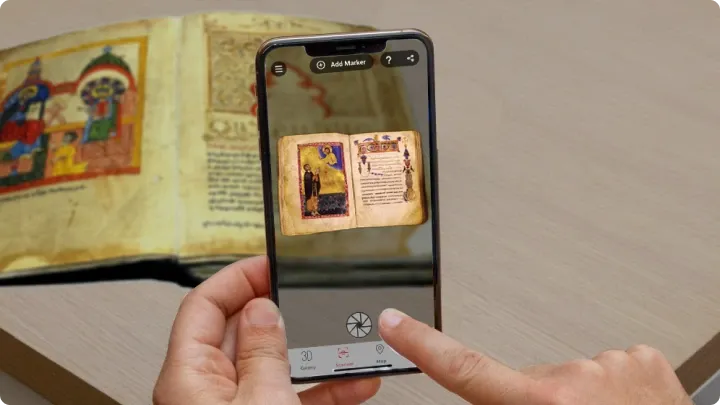Bring history and culture to life with AR technology

Augmented Reality (AR) technology has the power to bring history and culture to life in museums like never before. By overlaying digital information onto the physical world, AR technology allows visitors to see and experience exhibits in a new and interactive way. In this blog post, we will explore how museums can use AR technology to enhance their exhibits and provide a richer, more engaging experience for visitors.
Enhance the Visitor Experience
AR technology can be used to enhance the visitor experience by providing additional information about exhibits. Visitors can use their smartphones or tablets to scan objects in the exhibit, and AR technology will overlay digital content onto the physical object. This could include 3D models, animations, and historical information about the object.
For example, imagine visiting a museum exhibit on ancient Rome. With AR technology, visitors can scan a statue of Julius Caesar and see a 3D model of what he may have looked like in real life. They can also see animations of how the Colosseum was built and learn about the different gladiators who fought there.
Create Interactive Exhibits
AR technology can also be used to create interactive exhibits that engage visitors in a more hands-on way. For example, visitors could use AR-enabled devices to explore virtual environments that recreate historical events or places. They could also participate in interactive games that test their knowledge of historical events.
For example, imagine visiting a museum exhibit on the American Revolution. Visitors could use AR-enabled devices to explore a virtual battlefield, where they could see and interact with soldiers, cannons, and other historical artifacts. They could also participate in an interactive game where they have to make decisions as a general in the Continental Army, testing their knowledge of historical events.
Make Exhibits Accessible to Everyone
AR technology can also make exhibits more accessible to people with disabilities. For example, people with visual impairments can use AR-enabled devices to scan objects in the exhibit and hear audio descriptions of the objects. This can help them to better understand and appreciate the exhibit.
Reach a Wider Audience
Finally, AR technology can help museums reach a wider audience by making their exhibits more engaging and interactive. Visitors of all ages and backgrounds are more likely to be interested in exhibits that use AR technology, as it provides a unique and immersive experience that cannot be replicated in other forms of media.
Conclusion
AR technology has the power to bring history and culture to life in museums. By enhancing the visitor experience, creating interactive exhibits, making exhibits accessible to everyone, and reaching a wider audience, museums can use AR technology to provide a richer, more engaging experience for visitors.
See more articles
Products
Company
Solutions






